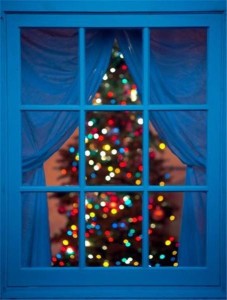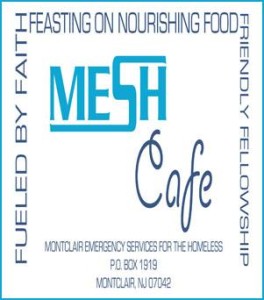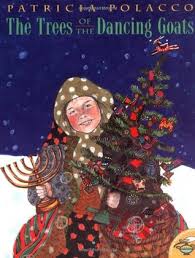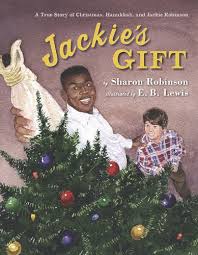Notes From the Lampert Library
 I’m blinded by Christmas: the glitter, the decorations, the overwhelming decor. It wasn’t always like that.
I’m blinded by Christmas: the glitter, the decorations, the overwhelming decor. It wasn’t always like that.
I remember as a kid walking home from piano lessons and looking in the windows at the lighted trees, shimmering and shining inside my neighbors’ homes. Christmas was mostly private, with only a few places having outside decorations, although the schools didn’t seem aware of that fact.
Each year we learned and sang the carols – not just seasonal songs. I think we few Jewish kids probably knew the words to Silent Night better than the words to Maoz Tzur and could more easily sing Oh, Little Town of Bethlehem than Adon Olam.
But most of us knew that these songs were not our songs. However, we also knew that it wouldn’t do much good to protest. So we had our silent protest. We didn’t sing the words Jesus or Christ. No one ever said a word about our silence and little changed because of it. And fortunately, this only took place in December.
Of course, those were also the days when the school day began not only with the Pledge of Allegiance (did you know that the Pledge was formally adopted only in 1942 although it was written in 1892?) followed by the Lord’s Prayer -and we all knew whose Lord this was -and a Bible reading. The more sensitive teachers read from the Psalms. The more oblivious ones always read from the New Testament.
Even within this Christian context there were differences. Catholics, the majority, and Protestants end the Lord’s Prayer differently. So every morning, our Catholic classmates joined the few Jewish students in a moment of silence as the Protestant students concluded the prayer.
Gradually Christmas has become a season. Many claim that it is secular while others argue for putting Christ back into Christmas. When once decorations and commercials began after Thanksgiving, now it’s before Halloween. It’s almost impossible to escape the Christmas red and green, and the forced gaiety that it all brings.
Historically, Christmas was a subdued, even somber, holiday. The early Puritans didn’t celebrate the day because it wasn’t in the Bible; the more patrician Anglicans of the South used the day for revelry. Card giving, gift giving, tree decorating gradually escalated beginning in the mid 19th century. For an excellent article see the excellent article on Christmas in 19th century America at www.historytoday.com.
 I’m glad to see that Christmas still has its element of hospitality and kindness beneath all the glitz. At Shomrei we have opened up the MESH Cafe on Christmas Eve for those who have no other place to have a holiday dinner. The mitzvah of hachnasat orchim is alive and well at Shomrei with the downstairs hosting IHN and the upstairs feeding MESH twice this week.
I’m glad to see that Christmas still has its element of hospitality and kindness beneath all the glitz. At Shomrei we have opened up the MESH Cafe on Christmas Eve for those who have no other place to have a holiday dinner. The mitzvah of hachnasat orchim is alive and well at Shomrei with the downstairs hosting IHN and the upstairs feeding MESH twice this week.
But our small act of mitzvah and hospitality seems far removed from the commercialism of the larger world. It’s hard to escape Chri$tmas. This all makes me wonder how, in our modern American world suffused with Christmas on all the media, those who do not come from a Judeo-Christian background feel. Do they sit in silent protest mouthing the words or do they use the power of words to enforce the secularism of our society?
There are many children’s books that deal with the Christmas conflict or dilemma, as it is often called. Ironically, some of the plots are very similar to what is happening on many college campuses today where minority students feel marginalized and are speaking out in protest.
Cohen, The Christmas Revolution, relates how 4th grader Emily is forced to think about her Jewish heritage when a new Jewish classmate refuses to participate in the school Christmas celebrations.
Cohn, Christmas Menorahs: How a Town Fought Hate, is the true story of how people in Billings, Montana, joined together to fight a series of hate crimes against a Jewish family.
 Cooper, Sam I Am is 12-year-old Sam, the son of a Jewish father and Christian mother, who struggles to understand religion and its role in his family’s life during the Hanukkah and Christmas holidays.
Cooper, Sam I Am is 12-year-old Sam, the son of a Jewish father and Christian mother, who struggles to understand religion and its role in his family’s life during the Hanukkah and Christmas holidays.
Polacco, Trees of the Dancing Goats, based on a memory from the author’s childhood, shows a true act of kindness when a Jewish family helps make Christmas special for their sick neighbors.
Robinson, Jackie’s Gift, is based on the story of when Jackie Robinson, learning that his neighbors did not have a  tree for Christmas, unwittingly brings one as a gift to the Jewish family.
tree for Christmas, unwittingly brings one as a gift to the Jewish family.
Rosen, Elijah’s Angel, is a gift of a carved angel that the Christian woodcarver gives to a young Jewish friend who struggles with accepting the Christmas gift until he realizes that friendship means the same thing in any religion.
Sussman, There’s No Such Thing as a Chanukah Bush, Sandy Goldstein, features a wise, understanding grandfather who helps Robin, a Jewish child, cope with Christmas.
- Is It Passover Yet? - Thu, Apr 18, 2024
- MESH Report April 9, 2024 - Thu, Apr 11, 2024
- Guess Who? - Wed, Mar 13, 2024
